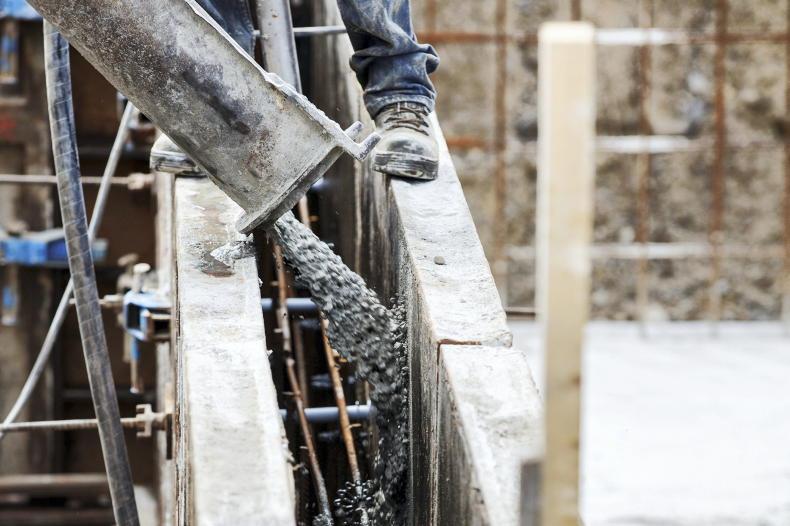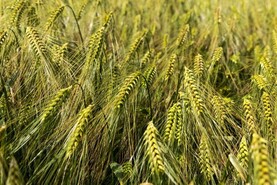As fertiliser prices have increased in recent years, so too has the value of slurry, putting a greater focus on how it is utilised on farm.
The value of slurry is set by its nutrient content and how it is utilised on farm.
While nutrient content will be dictated by the diet that livestock are on, be it concentrates or fodder, how these nutrients are uptaken by grass or crops is set by other factors such as soil temperature, weather and rate of application.
At Moorepark’s open day, it was highlighted how maximising slurry nutrient use efficiency will also help to maintain grass production levels in the face of regulatory reduction in chemical fertiliser application limits while sub-optimal management of slurry also represents a significant threat to water quality.
Further reductions in chemical nitrogen allowances due to environmental regulation was also highlighted as raising the value of slurry in comparison to chemical fertilisers the value of our slurry increases with it being said “going forward we need to look at the value of our slurry and its ability to grow grass in the absence of chemical fertiliser.
“In the past if we didn’t get the maximum value from our slurry by spreading at the wrong time or weather conditions, we could supplement our grass growth by top dressing with chemical nitrogen (N)” with the above now being a more limited option to farmers.
Table 1 details the approximate costs of the creation of slurry storage under three different methods for dairy cows over a 20-week winter.
Looking at the cost of additional slurry storage the upfront capital cost is circa €800 per cow excluding VAT and any potential grant (for which there is currently 60% grant aid). Even using a 40% grant rate, our cost per cow is reduced to €480 per cow.
At a cost of €800/cow for new slurry storage, the cost over a 40-year lifespan of the tank will be €20/cow/year excluding a finance charge.
Utilising the slurry at the optimum versus the suboptimal time results in over twice this money being saved at the current value for slurry, which will likely only increase in
subsequent years.
If the farmer was to avail of grant aid to build their tank, then the cost is reduced to just €12/cow, leaving a 1:3.5 return on interest for the farmer.
Additives and slurry separation
The role of slurry additives and screw press separators for drying slurry was also discussed.
Two main types of additives were mentioned, being inoculants that add bacteria to the tank and also acids.
The inoculants tested in research trials did not improve the nutrient content of the slurry and was therefore recommended not be used.
Increasing the pH through the addition of acids has potential and is used in countries like Denmark however, it requires a lot of capital investment to ensure adequate mixing, with Teagasc “not in a position in this country to recommend it yet.’’
Regarding slurry separation through the use of a screw press, whereby the liquid part (high in N) is returned to the tank and spread on grazing land, while the solid fraction (high in P) is returned to the dung stead before being transported to out blocks (most likely used for silage/zero grazing which results in high P off takes) Teagasc stated that there are benefits in drying if moving the material over long distances and then potentially helping balance nutrients across the farm, though it needs to be spread carefully and matched to soil samples as you are spreading nutrient
dense materials
Greater focus now on slurry storage amid restriction on fertiliser use as well as environmental impact of spreading slurry. Slurry spread in optimal conditions three times more valuable than that spread in suboptimal conditions.Cost per cow of €20/year where no grant aid received or €12/cow where grant aid is received based off a 40-year lifespan.Slurry additives not recommended, while caution urged over using separated slurry.
As fertiliser prices have increased in recent years, so too has the value of slurry, putting a greater focus on how it is utilised on farm.
The value of slurry is set by its nutrient content and how it is utilised on farm.
While nutrient content will be dictated by the diet that livestock are on, be it concentrates or fodder, how these nutrients are uptaken by grass or crops is set by other factors such as soil temperature, weather and rate of application.
At Moorepark’s open day, it was highlighted how maximising slurry nutrient use efficiency will also help to maintain grass production levels in the face of regulatory reduction in chemical fertiliser application limits while sub-optimal management of slurry also represents a significant threat to water quality.
Further reductions in chemical nitrogen allowances due to environmental regulation was also highlighted as raising the value of slurry in comparison to chemical fertilisers the value of our slurry increases with it being said “going forward we need to look at the value of our slurry and its ability to grow grass in the absence of chemical fertiliser.
“In the past if we didn’t get the maximum value from our slurry by spreading at the wrong time or weather conditions, we could supplement our grass growth by top dressing with chemical nitrogen (N)” with the above now being a more limited option to farmers.
Table 1 details the approximate costs of the creation of slurry storage under three different methods for dairy cows over a 20-week winter.
Looking at the cost of additional slurry storage the upfront capital cost is circa €800 per cow excluding VAT and any potential grant (for which there is currently 60% grant aid). Even using a 40% grant rate, our cost per cow is reduced to €480 per cow.
At a cost of €800/cow for new slurry storage, the cost over a 40-year lifespan of the tank will be €20/cow/year excluding a finance charge.
Utilising the slurry at the optimum versus the suboptimal time results in over twice this money being saved at the current value for slurry, which will likely only increase in
subsequent years.
If the farmer was to avail of grant aid to build their tank, then the cost is reduced to just €12/cow, leaving a 1:3.5 return on interest for the farmer.
Additives and slurry separation
The role of slurry additives and screw press separators for drying slurry was also discussed.
Two main types of additives were mentioned, being inoculants that add bacteria to the tank and also acids.
The inoculants tested in research trials did not improve the nutrient content of the slurry and was therefore recommended not be used.
Increasing the pH through the addition of acids has potential and is used in countries like Denmark however, it requires a lot of capital investment to ensure adequate mixing, with Teagasc “not in a position in this country to recommend it yet.’’
Regarding slurry separation through the use of a screw press, whereby the liquid part (high in N) is returned to the tank and spread on grazing land, while the solid fraction (high in P) is returned to the dung stead before being transported to out blocks (most likely used for silage/zero grazing which results in high P off takes) Teagasc stated that there are benefits in drying if moving the material over long distances and then potentially helping balance nutrients across the farm, though it needs to be spread carefully and matched to soil samples as you are spreading nutrient
dense materials
Greater focus now on slurry storage amid restriction on fertiliser use as well as environmental impact of spreading slurry. Slurry spread in optimal conditions three times more valuable than that spread in suboptimal conditions.Cost per cow of €20/year where no grant aid received or €12/cow where grant aid is received based off a 40-year lifespan.Slurry additives not recommended, while caution urged over using separated slurry. 





 This is a subscriber-only article
This is a subscriber-only article










SHARING OPTIONS: